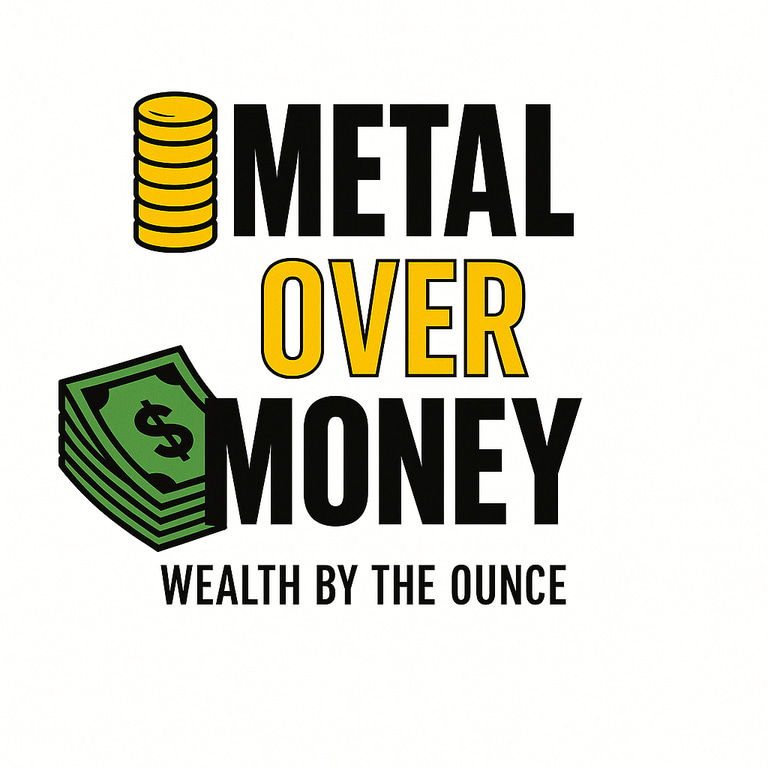The Great Depression 2.0: When the Dollar Sneezes, the World Catches a Cold
Gold’s surge is warning us that the dollar’s strength is fading — and the world is watching. As the global reserve currency weakens, every economy tied to it feels the shock. Could a collapsing dollar trigger a Great Depression 2.0? Explore how rising gold prices signal deeper trouble, why “when America sneezes, the world catches a cold,” and what a modern currency collapse could look like in a hyper-connected world.
MARKET INSIGHTS
10/14/20254 min read


Keywords: Great Depression 2.0, rising gold prices, weaker dollar, global recession, reserve currency
There’s an old saying on Wall Street: “When America sneezes, the world catches a cold.”
In 2025, that phrase feels more relevant than ever.
Gold is climbing to record highs, the dollar’s dominance is slipping, and global markets are trembling. The question many investors are whispering now:
Are we heading toward a Great Depression 2.0?
Gold’s Rise — The Canary in the Coal Mine
For centuries, gold has acted as a financial warning bell.
When confidence in paper money fades, gold rises — not because gold changed, but because the currency did.
The recent surge in gold prices is more than just investor enthusiasm; it’s a signal. A rising gold price means a weakening dollar.
As central banks print more money to cover growing debt, the purchasing power of each dollar falls. Investors, institutions, and even governments rush to gold as protection — pushing prices higher.
Gold doesn’t create wealth; it reveals fear.
When gold breaks record after record, it’s not celebration — it’s caution flashing in bright yellow metal.
The Dollar’s Fragile Power
Since the end of World War II, the U.S. dollar has served as the world’s reserve currency — the backbone of global trade. Oil, commodities, and international loans are priced in dollars.
That means every nation — from Japan to Brazil — holds dollars to do business. But this dominance also makes the global economy dangerously dependent on U.S. stability.
If the dollar weakens too much, the ripple effects spread worldwide:
Import prices soar across nations.
Debt denominated in dollars becomes harder to repay.
Investors flee to safety — usually gold, silver, or other tangible assets.
If that weakness turns into collapse, the entire financial system could seize up — triggering a global recession or worse, a Great Depression 2.0.
When America Sneezes, the World Catches a Cold
This old proverb captures a harsh truth: the U.S. economy sets the tone for the world.
When the American consumer cuts spending, global exports fall. When U.S. interest rates rise, emerging markets struggle to pay debt. And when the dollar falters, other currencies shake.
Because the dollar is intertwined with nearly every economy, a major collapse wouldn’t just affect the U.S. — it would reverberate through every stock market, every commodity, and every central bank reserve on Earth.
That’s why economists call the dollar’s reserve status both a blessing and a burden.
What a Great Depression 2.0 Could Look Like
A modern-day Great Depression wouldn’t unfold exactly like the 1930s — but the patterns would rhyme.
Here’s what it could look like:
Rapid Dollar Devaluation:
The dollar loses purchasing power faster than wages rise. Everyday goods — food, fuel, rent — skyrocket in price.Debt Defaults:
As interest rates rise to protect the currency, borrowers — from small businesses to national governments — begin to default.Banking Strain:
Fear of insolvency spreads. People rush to withdraw cash or convert it to gold, silver, or crypto.Mass Unemployment:
Corporations slash jobs as demand collapses, mirroring the layoffs of the early 1930s when U.S. unemployment reached 25%.Asset Fire Sale:
Real estate, stocks, and bonds tumble as investors flee to tangible value.Social & Political Unrest:
Currency instability fuels anger, populism, and protectionism — conditions that historically lead to radical policy shifts.
In essence, a Great Depression 2.0 wouldn’t be caused by lack of money — but by lack of trust in the money itself.
Lessons from History: Currency Collapses
We’ve seen this before.
Throughout history, currency crises have devastated economies:
Weimar Germany (1920s): After printing money to pay war debts, Germany’s mark collapsed. People needed wheelbarrows of cash for a loaf of bread. Those who held gold and silver survived; those who didn’t lost everything.
Argentina (2001 – present): Repeated currency devaluations wiped out savings. Argentines learned to store wealth in U.S. dollars — and now, increasingly, in gold and crypto.
Zimbabwe (2008): Hyperinflation soared into the billions of percent. The government eventually abandoned its own currency.
Venezuela (2010s): Oil collapse and money printing triggered hyperinflation. Citizens turned to gold jewelry, silver coins, and even barter to survive.
Every time a currency loses credibility, gold reclaims its throne as real money.
Why This Time Is Different — and the Same
Today’s global financial system is digital, interconnected, and faster than anything in history.
That means a crisis can spread instantly.
A sharp decline in the dollar could lead to:
Foreign nations dumping U.S. bonds, causing yields to spike.
Energy and food imports priced in stronger currencies, driving inflation higher.
Global trade disruptions as confidence in fiat systems erodes.
But the pattern remains timeless: when paper money fails, humanity turns back to precious metals.
Gold’s Quiet Warning
Every era of instability begins with whispers — and gold is whispering now.
A surging gold price is the market’s way of saying “something’s wrong.” It reflects declining confidence in fiat and rising anxiety about debt, politics, and central bank policy.
If awareness spreads — if the public begins to understand what institutions already see — gold could rise much higher, not because it’s suddenly more valuable, but because the dollar is worth less.
Protecting Yourself in Uncertain Times
No one knows exactly how the next crisis will unfold, but history offers clear lessons:
Diversify: Don’t rely entirely on paper assets.
Hold Tangibles: Gold, silver, and other hard assets endure when currencies falter.
Stay Liquid: Flexibility is survival during financial upheaval.
The next Great Depression may not begin with a crash — it may begin quietly, with the steady erosion of confidence in the world’s reserve currency.
By the time everyone else sees it, the smart money will already be positioned.
When paper currencies weaken, metals often shine — a pattern explored in Why Physical Metals Beat ETFs and Paper Gold.
If history repeats, growing public awareness may lead to another surge like we discuss in The Gold Rush Awakens: Why Precious Metals Are Going Mainstream.
Disclaimer
This article is for educational and informational purposes only. It is not financial advice. Precious-metal investing and currency speculation involve risk. Always do your own research or consult a licensed financial advisor before making investment decisions.
Disclaimer
The content shared on Metal Not Money represents personal opinions and experiences based on independent research and a passion for precious metals. It is not financial, legal, or investment advice.
Always do your own due diligence and consult with a qualified financial professional before making any investment decisions.
info@metalovermoney.com
© 2025. All rights reserved.
